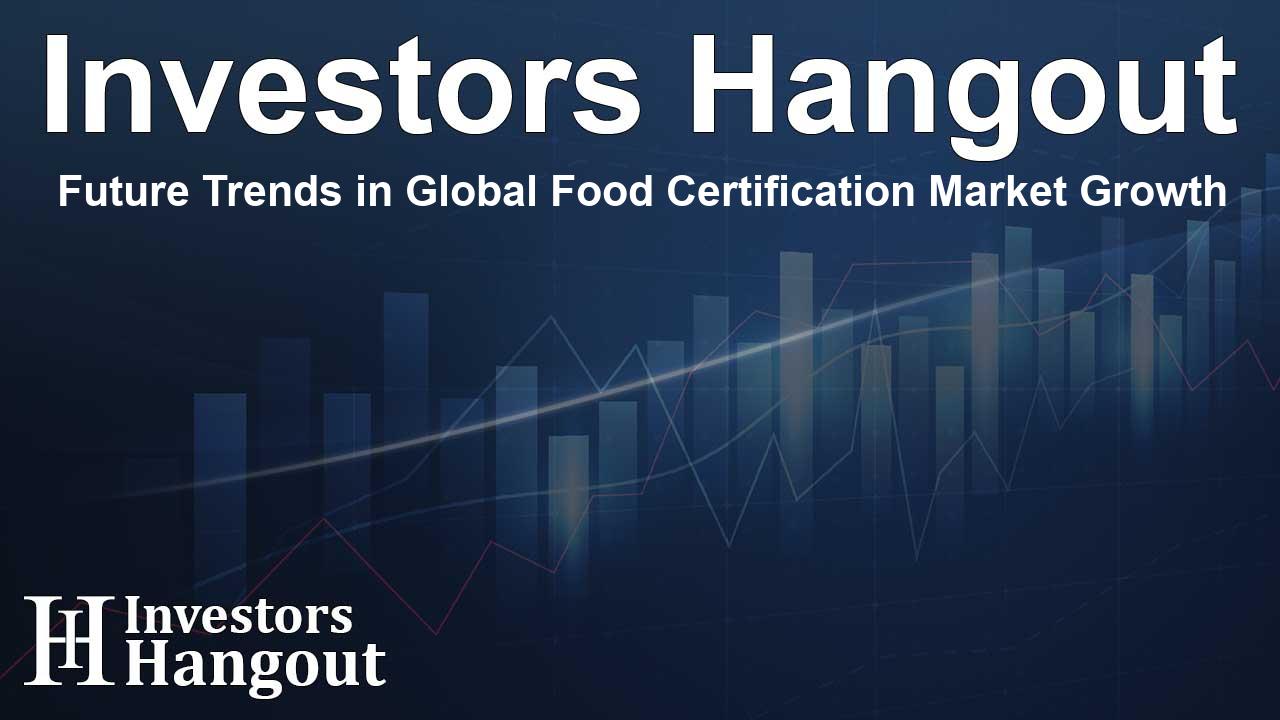Future Trends in Global Food Certification Market Growth

Understanding the Global Food Certification Landscape
In recent months, the global food certification market has been gaining significant traction, with a projected valuation of approximately USD 9,632.7 million by 2034. This growth is anticipated to occur at a robust compound annual growth rate (CAGR) of 5.28% from 2025 to 2034. Such positive trends stem from various factors, including increasing consumer insights into food safety and the need for comprehensive food quality standards.
Factors Driving Market Growth
The food certification process involves meticulous assessments and regular audits that guarantee adherence to established quality standards. One of the primary drivers fueling growth in the food certification market is the escalating awareness surrounding food safety and security issues. As consumers become more informed about the origins and handling of their food, the demand for certifications such as ISO 22000 and HALAL is expected to soar.
Emerging Opportunities
Furthermore, there lies a growing market for products certified under various categories, including organic and sustainable certifications. These categories are becoming increasingly important to consumers keen on transparency and quality. The expanding food and beverage industry, coupled with enhanced investments in food safety inspections, will pave the way for lucrative opportunities amidst a competitive landscape.
Challenges in the Certification Process
Despite the promising growth trajectory, several challenges hinder the market's expansion. High certification costs, coupled with complex regulatory frameworks, present barriers for companies seeking to attain certification. The ongoing problem of product counterfeit also poses a significant threat to market stability and growth.
Segment Overview
The global food certification market is broadly segmented based on risk, type, application, and end-user. When considering risk, industries categorize products into high and low-risk segments. Historically, the high-risk segment has exhibited stronger market dominance due to stringent regulations that govern the processing of these foods.
Regional Insights and Dynamics
Geographically, the North American region is expected to maintain its leadership in the food certification market, driven mainly by the U.S. food safety regulations, which are becoming increasingly rigorous. The investment from both governmental and private entities in food safety initiatives reinforces this region's stronghold.
On the other hand, the Asia-Pacific region is predicted to witness the fastest growth rate, considering the rapid development in food processing technologies and a significant uptick in food consumption across key markets such as China and India. Changing consumer preferences towards certified foods indicate a shift that could lead to new growth avenues.
Market Segmentation and Key Players
The market is segmented into various categories, including high-risk and low-risk foods, as well as diverse certification types like ISO 22000, HACCP, and several product category certifications. These segments allow for a detailed analysis of market dynamics and consumer behavior.
Notable Competitors
The competitive landscape includes key players, and continuous innovation is vital for maintaining relevance within the sector. Companies such as GFSI, UL LLC, and SCS Global Services stand out as leading innovators, frequently updating their practices and technologies to enhance food safety measures. Collaboration among food manufacturers and certification bodies also ensures reliability and transparency in the industry.
Frequently Asked Questions
What is the projected size of the global food certification market?
The market size is expected to reach approximately USD 9,632.7 million by 2034.
What are the primary factors driving the growth of the food certification market?
Increasing consumer awareness about food safety, enhanced standards, and transparency practices are leading drivers.
Which regions exhibit the highest growth in the food certification industry?
North America currently leads the market, while the Asia-Pacific region anticipates the fastest growth rate.
What are the main challenges faced by the food certification market?
High certification costs and stringent regulatory processes are significant challenges impacting the market.
What types of food certification are gaining popularity?
ISO 22000 and HALAL certifications are among the most recognized and sought-after in the market.
About The Author
Contact Riley Hayes privately here. Or send an email with ATTN: Riley Hayes as the subject to contact@investorshangout.com.
About Investors Hangout
Investors Hangout is a leading online stock forum for financial discussion and learning, offering a wide range of free tools and resources. It draws in traders of all levels, who exchange market knowledge, investigate trading tactics, and keep an eye on industry developments in real time. Featuring financial articles, stock message boards, quotes, charts, company profiles, and live news updates. Through cooperative learning and a wealth of informational resources, it helps users from novices creating their first portfolios to experts honing their techniques. Join Investors Hangout today: https://investorshangout.com/
The content of this article is based on factual, publicly available information and does not represent legal, financial, or investment advice. Investors Hangout does not offer financial advice, and the author is not a licensed financial advisor. Consult a qualified advisor before making any financial or investment decisions based on this article. This article should not be considered advice to purchase, sell, or hold any securities or other investments. If any of the material provided here is inaccurate, please contact us for corrections.
